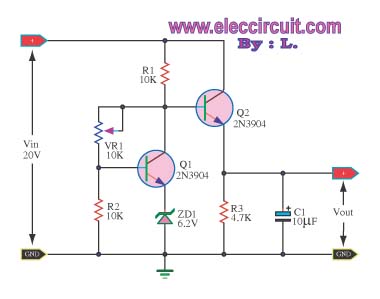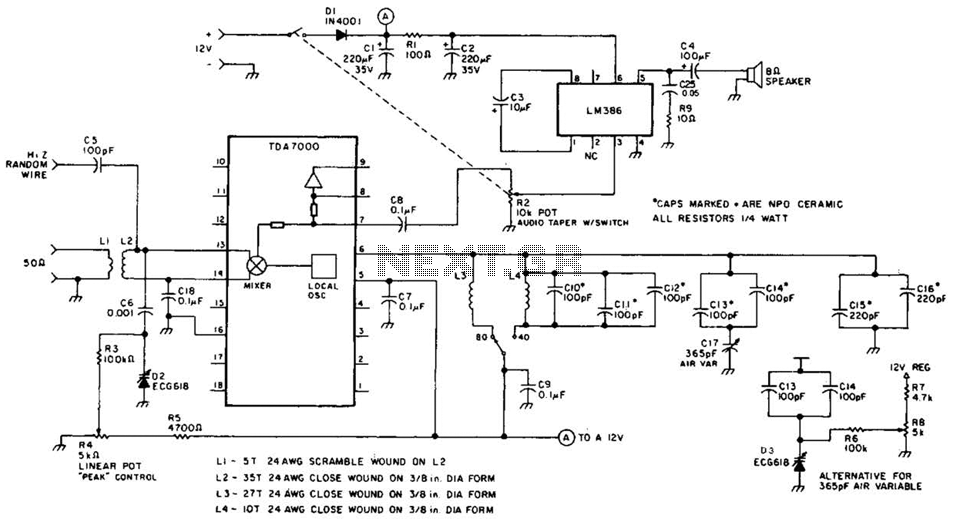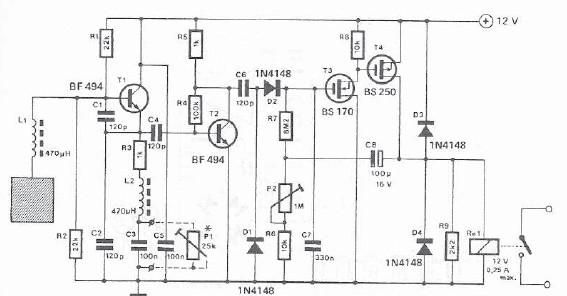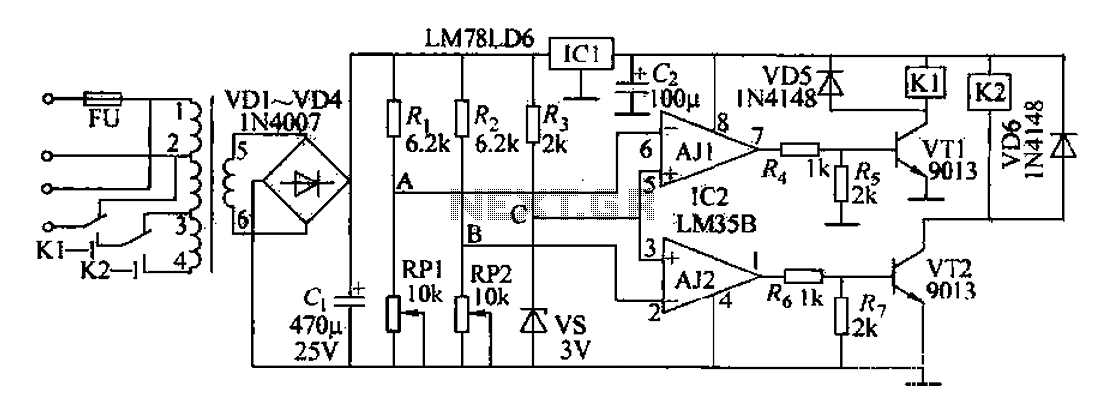
Simple House Alarm circuit
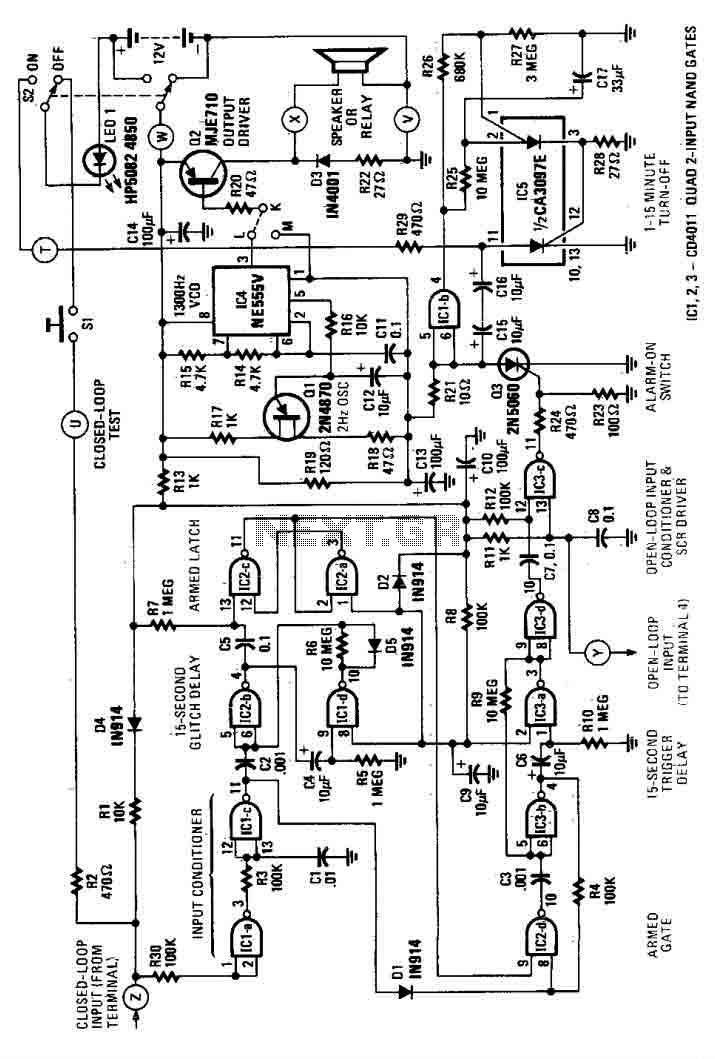
This house alarm circuit features both open and closed loop sensors and includes a self-shutdown function. The delay after triggering can be adjusted between 1 minute and 12 minutes, while the delay before triggering is set at 13 seconds. All timing parameters can be modified with minor adjustments to a few passive components. Key components in the circuit include three CD4011 integrated circuits, which are well-known quad 2-input NAND gates, a 555 timer, and a CA3097E.
The house alarm circuit is designed to provide a reliable security solution by utilizing both open and closed loop sensor configurations. The open loop configuration typically involves sensors that detect the presence of an intruder, while the closed loop configuration may involve door or window contacts that signal when a breach occurs. The self-shutdown feature enhances the circuit's usability by automatically disabling the alarm after a predetermined period, preventing unnecessary disturbances.
The timing mechanisms are critical to the circuit's performance. The adjustable delay after triggering allows users to set how long the alarm remains active once it has been triggered, ranging from 1 minute to 12 minutes. This flexibility accommodates various user preferences and scenarios. The 13-second delay before triggering provides a brief window for users to deactivate the alarm upon entering the premises, reducing the likelihood of false alarms.
The CD4011 integrated circuits serve as the core logic components of the alarm system, functioning as NAND gates to process input signals from the sensors. Their quad configuration allows for multiple logic operations within a single package, contributing to a compact design. The 555 timer is employed to create precise timing intervals, facilitating the adjustable delays. The CA3097E, a dual operational amplifier, may be utilized for signal conditioning and amplification, ensuring that sensor signals are accurately processed.
Overall, this alarm circuit combines essential components and features to deliver an effective security solution, with the ability to customize timing and response characteristics to suit user needs.This house alarm circuit has open and closed loop sensor and has self shutdown function. The delay after trigering can be adjusted from 1 minute to 12. The delay before trigering is 13 seconds. Offcourse all this timmings can be change with litle changes to few passive parts. The inportand parts in the circuit are 3 ICs CD4011 which are well known quad2 input nand gates, a timer 555 and the CA3097E.
The house alarm circuit is designed to provide a reliable security solution by utilizing both open and closed loop sensor configurations. The open loop configuration typically involves sensors that detect the presence of an intruder, while the closed loop configuration may involve door or window contacts that signal when a breach occurs. The self-shutdown feature enhances the circuit's usability by automatically disabling the alarm after a predetermined period, preventing unnecessary disturbances.
The timing mechanisms are critical to the circuit's performance. The adjustable delay after triggering allows users to set how long the alarm remains active once it has been triggered, ranging from 1 minute to 12 minutes. This flexibility accommodates various user preferences and scenarios. The 13-second delay before triggering provides a brief window for users to deactivate the alarm upon entering the premises, reducing the likelihood of false alarms.
The CD4011 integrated circuits serve as the core logic components of the alarm system, functioning as NAND gates to process input signals from the sensors. Their quad configuration allows for multiple logic operations within a single package, contributing to a compact design. The 555 timer is employed to create precise timing intervals, facilitating the adjustable delays. The CA3097E, a dual operational amplifier, may be utilized for signal conditioning and amplification, ensuring that sensor signals are accurately processed.
Overall, this alarm circuit combines essential components and features to deliver an effective security solution, with the ability to customize timing and response characteristics to suit user needs.This house alarm circuit has open and closed loop sensor and has self shutdown function. The delay after trigering can be adjusted from 1 minute to 12. The delay before trigering is 13 seconds. Offcourse all this timmings can be change with litle changes to few passive parts. The inportand parts in the circuit are 3 ICs CD4011 which are well known quad2 input nand gates, a timer 555 and the CA3097E.
